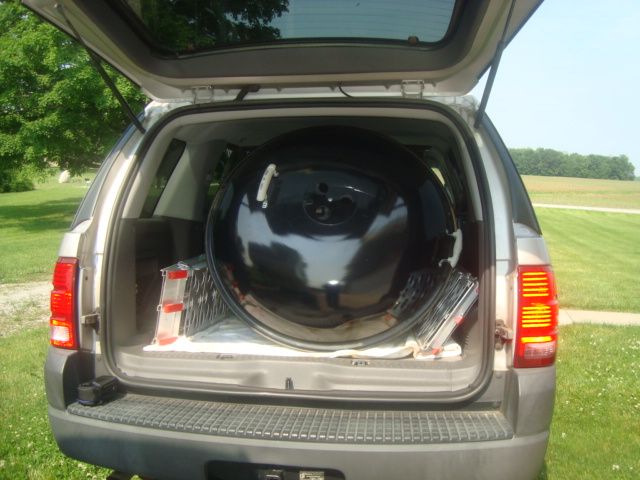
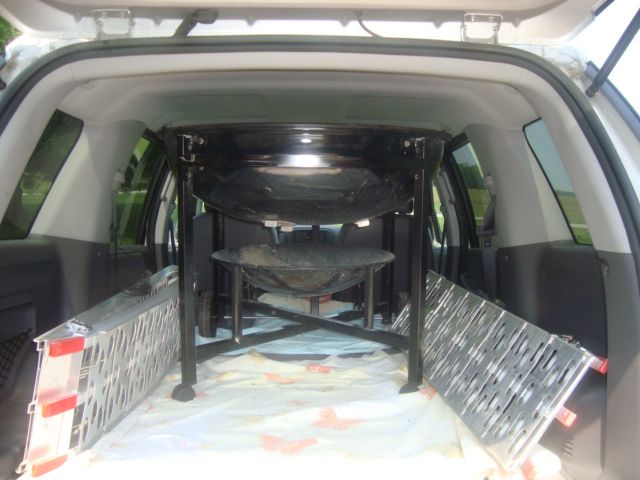
Was a tight fit but it did go into my car.
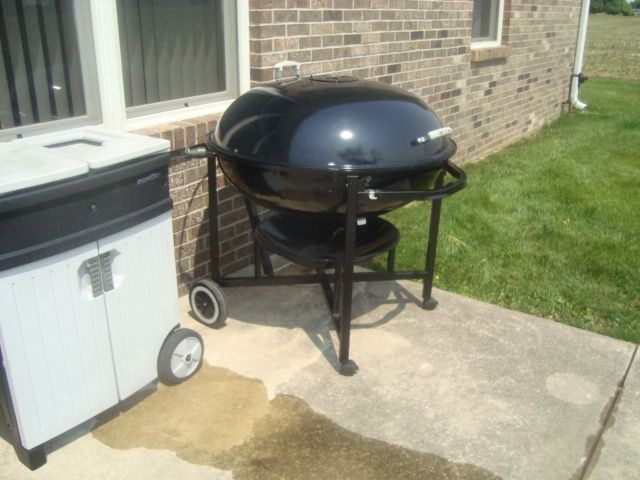
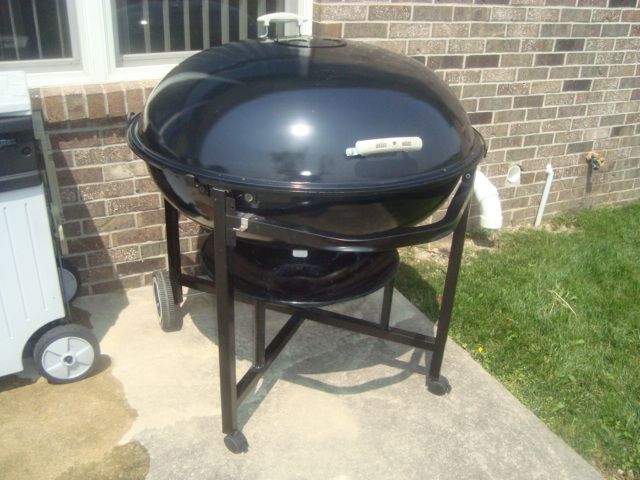
Cleaned it up a little and am ready to cook something.
I know this is overkill but I decided to cook a couple of St. Louis cut spare ribs over a big pan of Rick Salmon’s Pit beans. A fellow has got to learn on something!
I installed (4) Weber Charcoal Rails to hold my charcoal on each side of the cooker. I then split a full Weber chimney of cold Stubb’s briquets (85 pieces) between the two sides of the cooker. Planned to split another 3/4 full Weber chimney of hot coals (70 pieces) on top of the cold briquets. The total weight of the charcoal was six pounds.
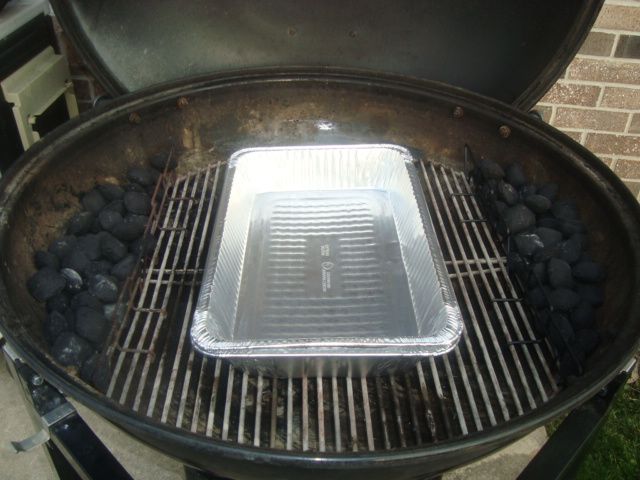
I planned to cook the pan of beans on the charcoal grate.

While I was at it, I tried two full pans under the main grid and they fit nicely. I have other ideas for this type of setup.
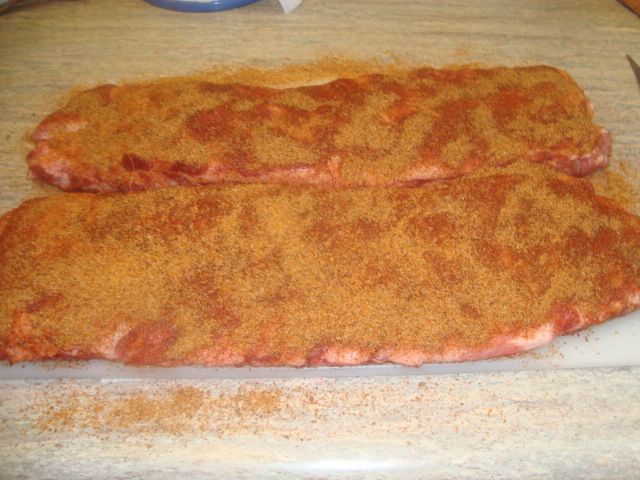
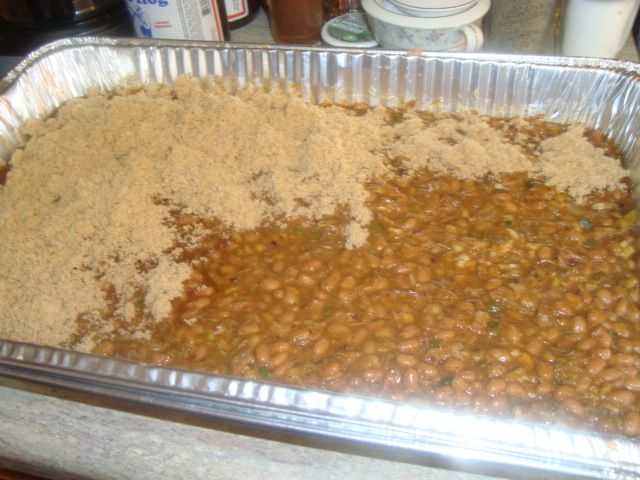
I prepped the ribs and then got my full pan of beans ready for the cooker. I also poured in my 3/4 chimney of hot coals into the cooker and added some hickory chunks.
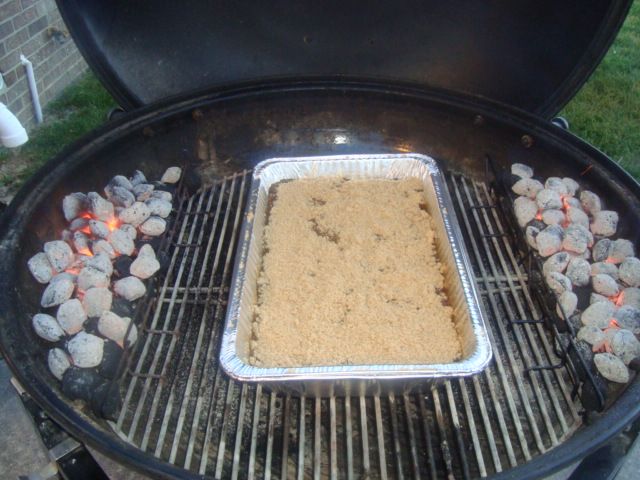
Placed my full pan of beans on the charcoal grate and then added my cooking grate.
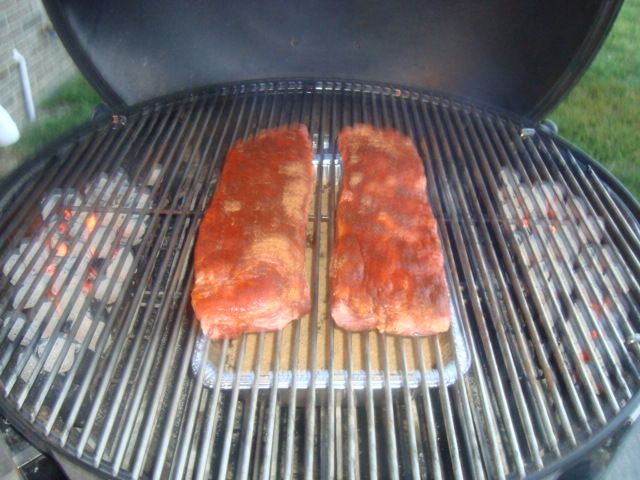
Placed the ribs over the top of my pan of pit beans so the drippings will go into the beans for additional flavor.
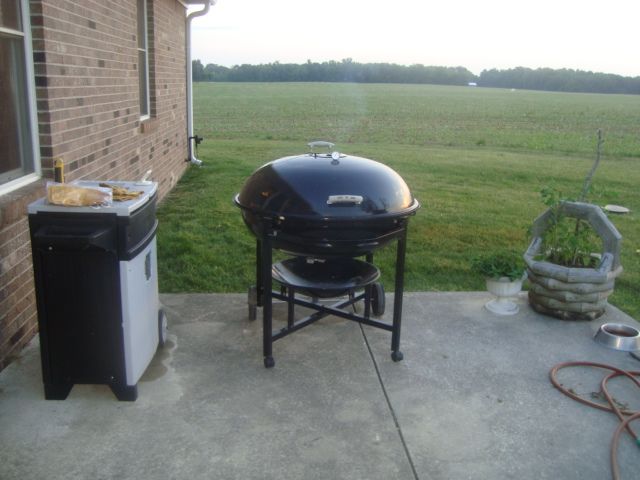
Cooked at about 250 degrees measured on the cooking grate for about 3 hours and then pulled the ribs.
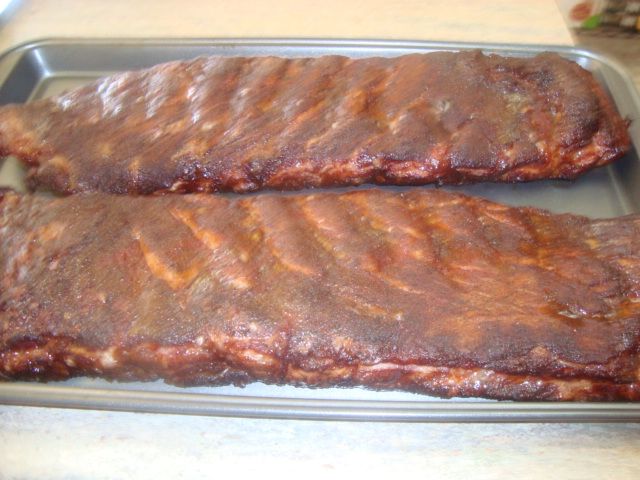
I wrapped the ribs with the goodies and placed them back on the cooker.

Charcoal was still doing fine and it looked like it was enough for the whole cook.
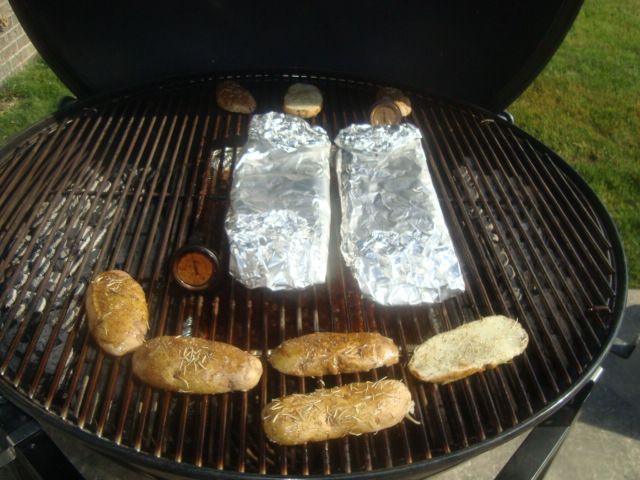
I also added some slab potatoes at this time. The ribs were cooked an additional 80 minutes in the foil until done at 205-208 degrees internal.
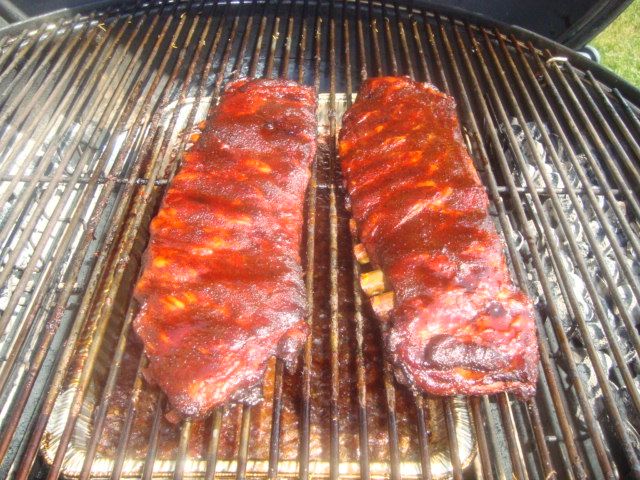
I unwrapped the ribs, put them back on the cooker and then glazed them for a few minutes and took them off the cooker.

I also removed my potatoes and pit beans from the cooker.
The cooker ran about 5 hours and 15 minutes on just the six pounds of charcoal briquets. I did stir them up once but that probably wasn’t necessary. Very pleased with the results of this cook.
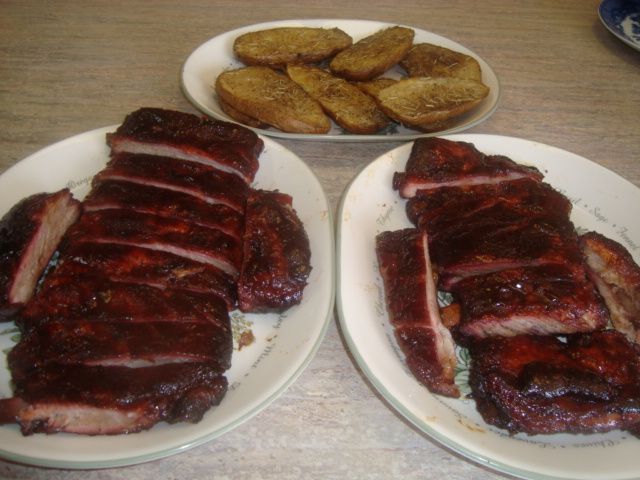

The ribs, beans, and potatoes looked great.
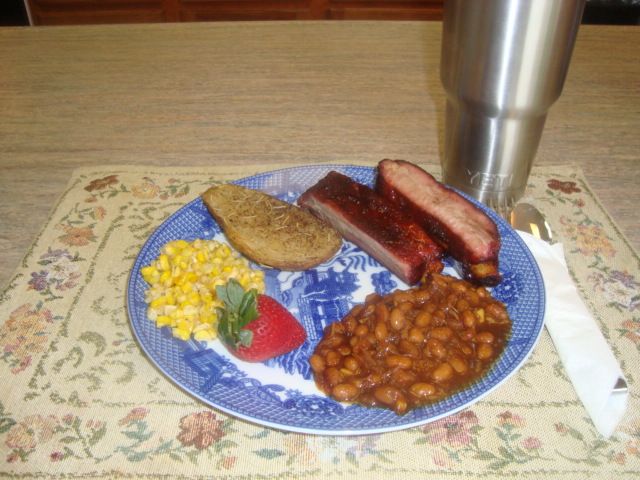
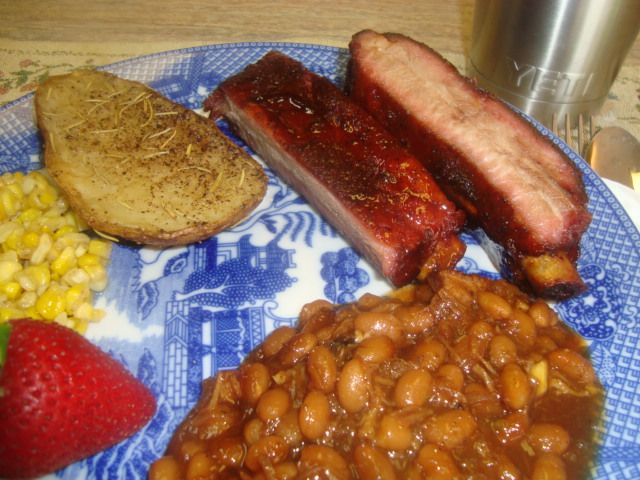
Added some fresh cut off the cob and fried sweet corn and some fruit and had a wonderful meal.
This kettle is going to be fun and I can't wait for an excuse to do a small pig.

I realize I'm over 2 years late to this party, but I just picked up a new Weber Ranch and am curious about the vent settings you use for low and slow. I have a lot of experience with a 22" kettle with Slow n Sear and know just how to set the intake and exhaust vents, but not sure how that knowledge translates to this beast. Any help is appreciated! Steve
ReplyDeleteHello Steve, For my low and slow cooking and most all other cooking, I use just one of the intake vents and usually the one on the left front side as I am facing the cooker. I keep the other three vents closed. I do try to keep the exhaust vent wide open unless it is running a little hotter than I want. It'a a very easy cooker to control in fact, easier than your 22" kettle. Hope this helps and I also hope you enjoy your new cooker as much as I have enjoyed my Ranch Kettle.
ReplyDeleteDave